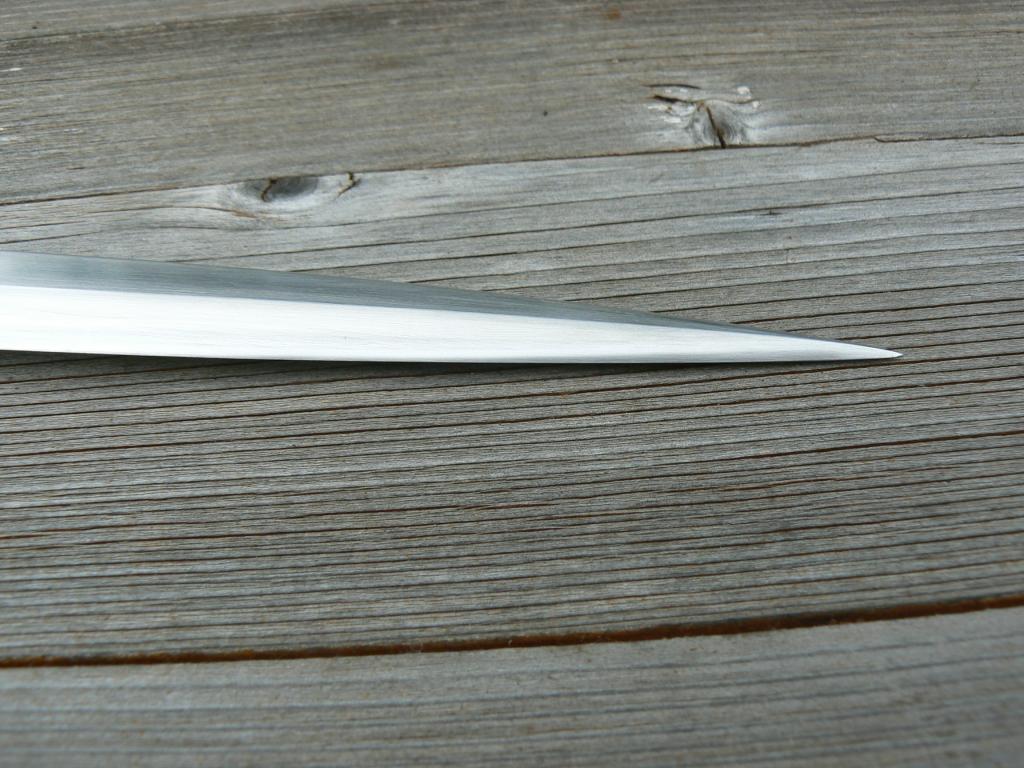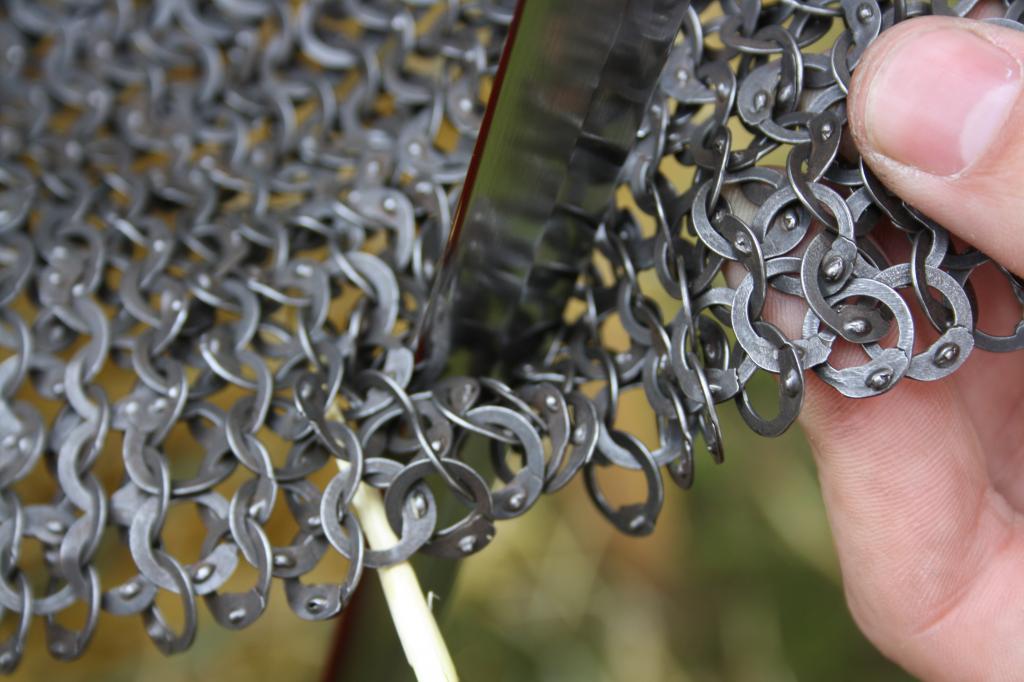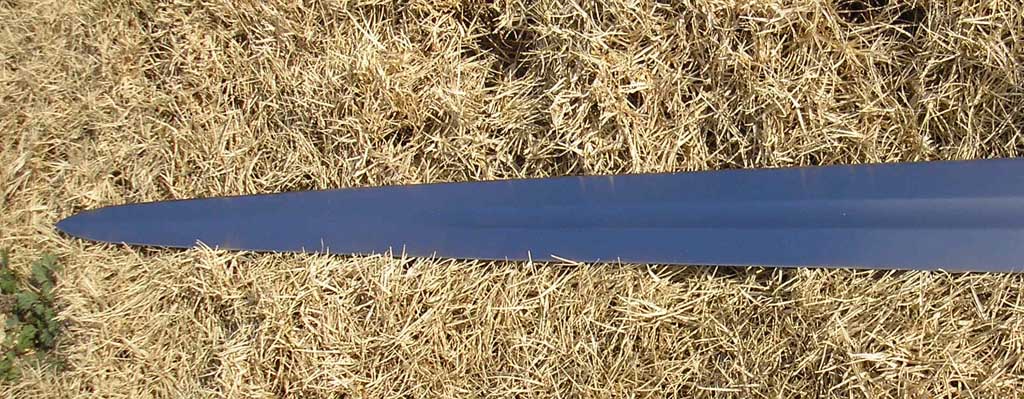I thought you might find this interesting. Similar tests have been done in the past but I figure, another view doesn't hurt.
Anyway, yesterday I had the opportunity to test two swords against some decent quality import mail from India. The mail was made of flat mild steel rings, riveted, about 9mm in diameter. Thickness of the rings was about 2mm.
For the thrusting tests, the mail was draped over bales of straw. I tested two swords against the mail, the XVIIIb longsword I recently made and a XII sword with a reground ATrim blade.
Fist up was the longsword. It has a narrow, pretty thick and reinforced needle point:


Using a half sword grip, a moderately strong thrust easily broke through the mail and penetrated 10cm in the straw. The tip burst one ring at the rivet, cut another one open and bent two or three more. A stronger thrust, even in a normal grip, would have been even more devastating I think. The blade didn't show a mark, only some shaved off material from the rings was visible on the sword's edges.


Next up the XII. I don't have a pic of its tip but it's typical for the time, very sharp but rather round and of lenticular cross section. This is pretty much what it looks like (courtesy of Mike Harris, this is an AT XII.2):

With a normal grip, I thrust three times into the mail. Result: not a thing. A couple light scratches on the rings and a very faint mark on the blade, practically invisible. No pics as you wouldn't see anything anyway. The XII I used is pretty stiff for its type so while certainly some energy was lost due to flexing, even had I (incorrectly) half sworded the blade to stiffen it, the result would be no different.
Reflection:
Against the round sword tip of its time, the mail was absolutely proof. Thrusts don't accomplish anything and cuts obviously stand even less of a chance to penetrate. Of course, blunt trauma shouldn't be ignored but overall, mail must have been a quite a formidable defense in its high time. The narrow and thick needle point of the later period sword (or bodkins for that matter) however make short work of the mail. While the mail used wasn't top of the shelf stuff, I still consider the test valuable. Better quality mail might have made it harder for the longsword to pierce it, the result for the XII would have been the same. Besides, I doubt all mail back then was created equal so while some might have been better, some probably performed pretty similar to what I was using.
Anyway, hope you find this interesting.
